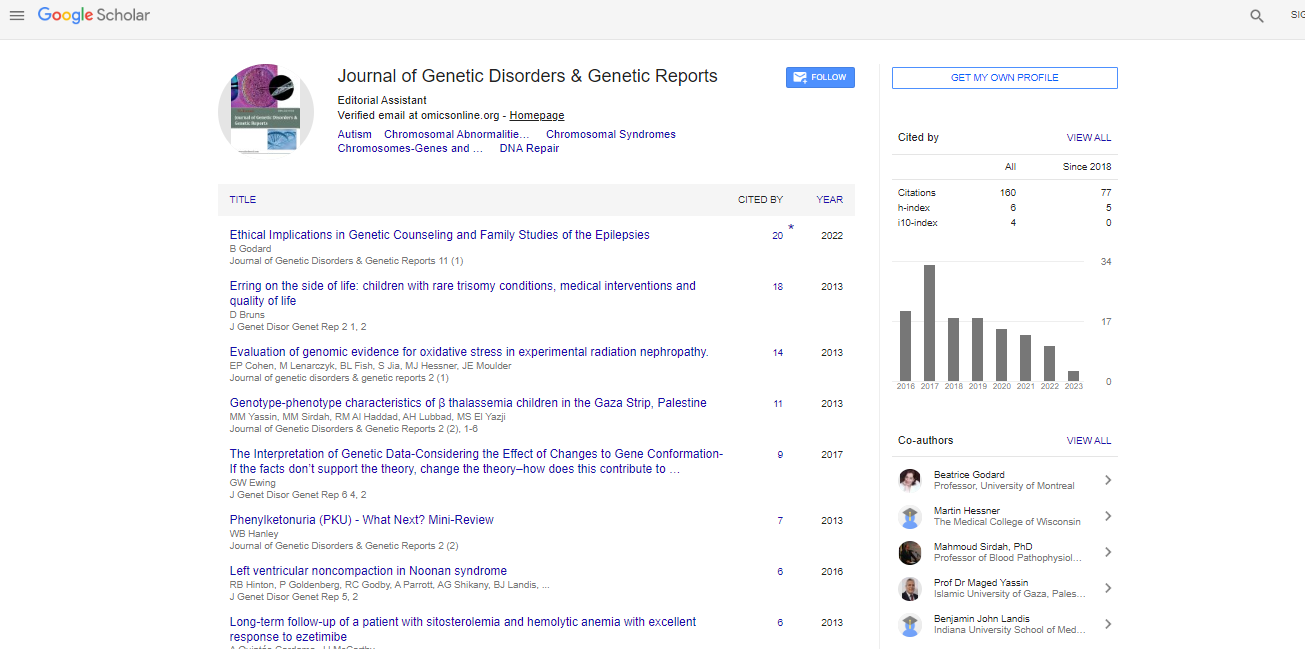Research Article, J Genet Disor Genet Rep Vol: 5 Issue: 4
Screening of Genetic Mutations in GBA1, GIGYF2 and VPS35 in Parkinson Disease Patients from India
| Tamali Halder1, Janak Raj2, Sharad Pandey2, Ajay Kumar3, Sagar Kawale3, Sandeep Chaudhary3, Vivek Sharma2, Deepika Joshi3 and Parimal Das1* |
| 1Centre for Genetic Disorders, Institute of Science, Banaras Hindu University, Varanasi-221005, Uttar Pradesh, India |
| 2Department of Neurosurgery, Institute of Medical Sciences, Banaras Hindu University, Varanasi -221005, Uttar Pradesh, India |
| 3Department of Neurology, Institute of Medical Sciences, Banaras Hindu University, Varanasi -221005, Uttar Pradesh, India |
| Corresponding author : Dr. Parimal Das Centre for Genetic Disorders, Institute of Science, Banaras Hindu University, Varanasi-221005, Uttar Pradesh, India Tel: +919307025080 E-mail: parimal@bhu.ac.in |
| Received: September 16, 2016 Accepted: October 06, 2016 Published:October 11, 2016 |
| Citation: .Halder T, Raj J, Pandey S, Kumar A, Kawale S, et al. (2016) Screening of Genetic Mutations in GBA1, GIGYF2 and VPS35 in Parkinson Disease Patients from India. J Genet Disor Genet Rep 5:4.doi:10.4172/2327-5790.1000144 |
Abstract
Background: Mutations in Glucocerebrosidase gene (GBA1) has long been identified as a genetic risk factor for Parkinson disease (PD) in various ethnic populations such as Chinese, Taiwanese, Canadian, Caucasian, Hungarian, Ashkenazi Jewish etc. However, so far no report exists on the role of GBA1 in the PD patients in Indian population. The present study has been designed to assess the frequency of two common mutations in GBA1 (p.L444P and p.N370S) along with two other recently reported mutations: (i) p.R610G in Growth factor Receptor Binding protein 10 interacting GYF protein 2 (GIGYF2) and (ii) p.D620N in Vacuolar protein shorting homolog 35 (VPS35) those were identified by nextgeneration sequencing in Spanish and Swiss/Australian PD families respectively, in Indian PD patient cohort.
Methods: A total of 114 clinically diagnosed PD patients including 2 familial cases and 120 ethnically matched healthy controls were enrolled for this study. GBA1 mutations were screened by PCR-RFLP and other two mutations in GIGYF2 and VPS35 were analyzed by direct DNA sequencing of the corresponding exons containing the selected mutations.
Results: Higher frequency of p.L444P mutation in GBA1 was found in PD patient cohort (3.51%) compared to controls (0%) (p=0.0548; OR=9.81, 95% CI 0.52-184.38). This frequency was higher in earlyonset PD group (6.06%) than that of Late onset PD group (2.46%) (p=0.2563). None of the PD patients posses any of the three rest mutations indicating it’s rarity in this population.
Conclusion: The present study concludes that the carriers of p.L444P mutation in GBA1 associated with Gaucher’s Disease (GD) are at an increased risk (OR=9.81, 95% CI 0.52-184.38) of developing PD in north-India irrespective of age of disease onset.
 Spanish
Spanish  Chinese
Chinese  Russian
Russian  German
German  French
French  Japanese
Japanese  Portuguese
Portuguese  Hindi
Hindi 



